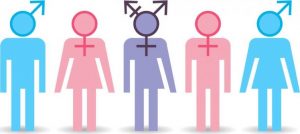March 26, 2018
This chapter is about the relationships between the audience, message, and the rhetor. The term exigence is defined by communication scholar Lloyd Bitzer, as “an imperfection marked by urgency; it is a defect, an obstacle, something waiting to be done, a thing which is other than it should be,” (227). In other words, the exigence of a rhetorical situation is how the audience actually responds to the situation. The three elements of a rhetorical situation are listed as: exigence, audience, and constraints. The (rhetorical) audience are just the individuals who are affected by the message and hope to invoke a positive change as a result. The constraints are the parts of the situation because they can influence decisions and actions that are needed to for the exigence to function. These three things must work together in order to have a fully developed message with the audience.
The textbook lists Hurricane Ike in 2008 as the example of an exigence for the people of Texas, specifically that the exigence was “people’s panic, not the storm,” (227). The exigence is what calls for the response from the audience. Depending on where people were living in Texas determined whether or not they were instructed to evacuate or to hunker down and ride out the storm.
Another example would be the recent protests and walkouts in response to multiple school shootings recently. All of the people who are marching are a part of the rhetorical audience because they are doing their part to promote a change in order to stop all of the violence in schools. Their exigence is their choice to protest and demonstrate their desire for a reform in gun laws. There are constraints as well. An example of a constraint in this situation is the legislation in place that, if not ratified, could continue to allow the same types of actions to occur that protesters are trying to stop.

Students across the country are spearheading efforts to pressure lawmakers to enact stricter gun control legislation. (Photo: @ajplus/Twitter) Needville, Texas
______________________________________________________________
April 2, 2018
Chapter nine is about the public and how different ideals are formed depending on how the public sphere is created. The term hybrid publics is “publics that do not choose between civic identity and deliberative politics, but instead recognize that both can exist in a mutually reinforcing relationship,” (272). The example that the textbook uses is the question of the immigration issue. The deliberation of who is and is not an immigrant has resulted in the naming of certain groups of people that has alienated them from others. Counterpublics which are defined as “parallel discursive arenas where members of subordinated social groups invent and circulate counterdiscourse to formulate oppositional interpretations of their identities, interests, and needs,” (273). In other words, a hybrid public and a counterpublics can work together in order to help a group of people define themselves within a set of opinions. A real-world example would be the question of gender equality. While there are certain political rights that all genders want, it is difficult to even get governments to understand that gender itself is a spectrum and not a binary. This means that people would have to rely on counterpublics in order to have their voice heard. Individuals who do not fall within the “accepted” notion of a cisgender man or woman have to fight to even be identified in the way that they would like to be seen. Once those in charge understand who they are making decisions for, it is then up to the counterpublics to enact what political and social rights that people want so they will be equal.



